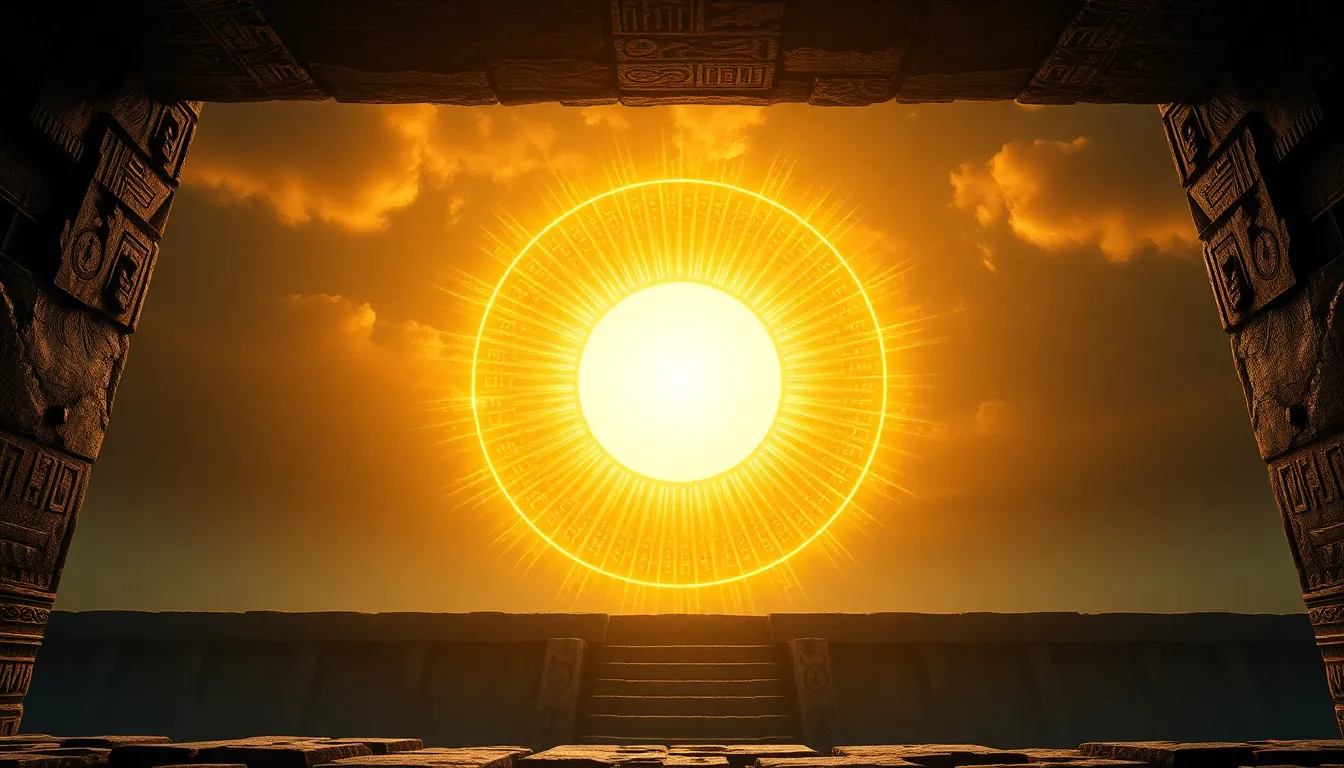The Myth of the Sun God: Insights from Tomb Texts
I. Introduction
The Sun God holds a prominent place in the mythology of ancient cultures, symbolizing life, power, and the cycle of existence. In many civilizations, the sun was revered not just as a celestial body but as a divine entity that governed the rhythm of life and death. In ancient Egypt, this reverence was particularly profound, with the Sun God often depicted as a key figure in creation myths and the afterlife.
Tomb texts serve as invaluable primary sources for understanding the mythological and religious insights of ancient Egyptians. These inscriptions, found in burial sites, provide a window into the beliefs and practices surrounding death and the afterlife, often revealing the significance of the Sun God in these contexts.
This article aims to explore the myth of the Sun God through the lens of tomb texts, highlighting key themes, historical context, and the role of this deity in ancient Egyptian beliefs about the afterlife.
II. Historical Context of Sun Worship
The worship of the sun can be traced back to the earliest human societies, where the sun was often seen as a source of warmth, light, and nourishment. In ancient Egypt, the Sun God, primarily represented by Ra, became central to their mythology and religious practices.
- Origins of Sun Worship: Early Egyptians recognized the sun’s importance for agriculture and daily life, leading to its deification.
- Role in Mythology: The Sun God was central in various creation myths, often depicted as the creator of all life.
- Cultural Variations: Different cultures had distinct representations of Sun Gods, such as Apollo in Greek mythology and Inti in Incan beliefs.
III. Overview of Tomb Texts
Tomb texts in ancient Egypt, including the Pyramid Texts, Coffin Texts, and the Book of the Dead, were inscribed to guide and protect the deceased in the afterlife. These texts were instrumental in conveying the beliefs of ancient Egyptians regarding life, death, and the role of the divine.
- Definition and Purpose: Tomb texts served as a means of communication with the gods, ensuring safe passage and protection in the afterlife.
- Types of Tomb Texts:
- Pyramid Texts: The oldest religious texts of ancient Egypt, found in royal tombs, detailing the journey of the dead king.
- Coffin Texts: A collection of spells and incantations designed for non-royal burials, offering guidance and protection.
- Book of the Dead: A compilation of spells and illustrations intended to assist the deceased in navigating the afterlife.
- Importance: These texts provide critical insights into beliefs surrounding the afterlife and the veneration of the Sun God.
IV. Key Themes in Sun God Myths
The myths surrounding the Sun God encompass several key themes that reflect the ancient Egyptians’ understanding of the world around them.
- Creation Narratives: Many myths describe the Sun God as the creator of the universe, bringing forth life from chaos.
- Journey Through the Heavens: The daily journey of the Sun God across the sky symbolizes the cycle of life, death, and rebirth.
- Symbolism of Light and Darkness: The interplay between light and darkness in these myths represents the duality of existence and the balance of life.
V. Analysis of Selected Tomb Texts
Examining specific tomb texts reveals the multifaceted role of the Sun God in ancient Egyptian belief systems.
- Pyramid Texts: These texts often feature hymns and spells invoking the Sun God, highlighting his essential role in the resurrection of the deceased.
- Coffin Texts: Many spells within these texts reference solar deities, illustrating the significance of the Sun God as a protector and guide for the deceased.
- Book of the Dead: This text includes detailed descriptions of the Sun God’s influence on the afterlife, emphasizing his role in the judgment of souls.
VI. The Sun God’s Role in the Afterlife
The Sun God was not merely a solar deity but also a vital figure in the afterlife, guiding souls on their journey beyond death.
- Guide for the Deceased: The Sun God was viewed as a protector who would illuminate the path for the deceased in the afterlife.
- Rituals and Offerings: Tombs often contained rituals and offerings dedicated to the Sun God, aimed at ensuring favor and protection for the deceased.
- Impact on Immortality: The Sun God’s eternal cycle of rising and setting paralleled the Egyptians’ beliefs in immortality and rebirth.
VII. Myths vs. Historical Reality
When exploring the Sun God mythology, it is essential to distinguish between mythological narratives and historical beliefs.
- Mythological Narratives: These stories served to explain natural phenomena and cultural values, often evolving over time.
- Evolution of the Myth: The portrayal of the Sun God adapted through various dynasties, reflecting the changing sociopolitical landscape.
- Contemporary Interpretations: Modern scholars continue to analyze these myths, seeking to understand their relevance and influence on ancient and modern cultures.
VIII. Conclusion
In summary, the exploration of the Sun God through tomb texts reveals profound insights into ancient Egyptian beliefs surrounding life, death, and the cosmos. These texts not only illuminate the significance of the Sun God in mythology but also offer a glimpse into the spiritual lives of the ancient Egyptians.
The enduring legacy of Sun God myths continues to resonate in modern culture, inspiring art, literature, and spiritual practices. Future research endeavors will undoubtedly uncover more layers of meaning within these ancient texts, emphasizing the importance of studying and preserving the rich tapestry of human belief systems.




